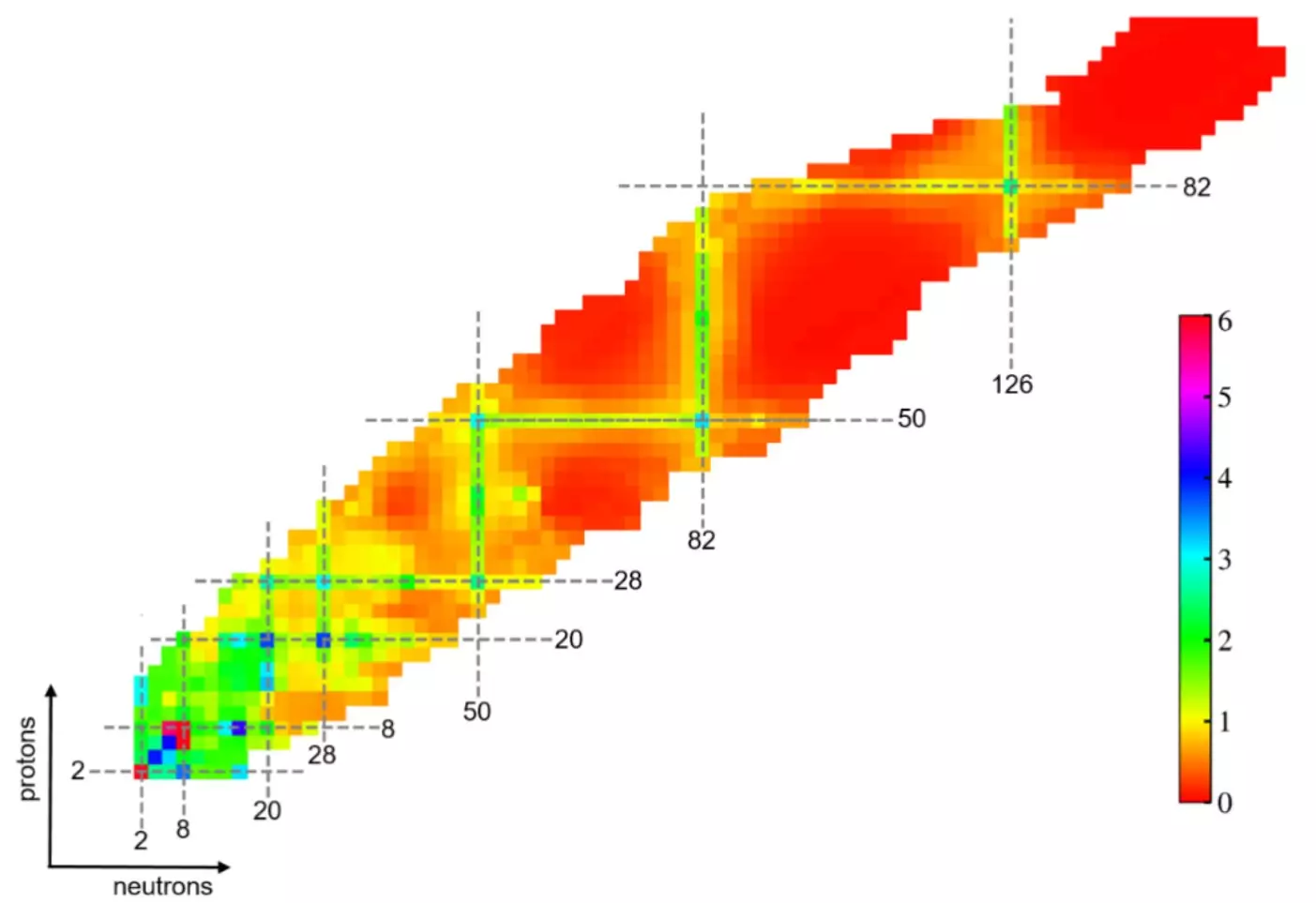In the realm of nuclear physics, the stability and behavior of atomic nuclei have intrigued scientists for decades. Research teams continue to push boundaries in this field, striving to decode the complexities surrounding nuclear structures, particularly those situated far from traditional stability limits. A recent ground-breaking study published in Physics Letters B sheds light on this intricate subject through advanced machine learning techniques, marking a significant step forward in our understanding of nuclear stability and magic numbers.
Magic Numbers: An Enduring Enigma
The concept of “magic numbers,” identified as specific quantities of protons or neutrons that result in particularly stable nuclei, originated in the 1930s. These numbers—2, 8, 20, 28, 50, 82, and 126—represent configurations that lead to lower energy states and enhanced stability. These observations, foundational to nuclear physics, suggest a shell structure analogous to electron configurations around atomic nuclei. Yet, emerging research challenges the notion that these magic numbers remain constant across various isotopes, especially those situated on the fringes of the stability valley.
Lyu Bingfeng, an Associate Professor at the Institute of Modern Physics (IMP) and a lead author of the study, emphasizes the importance of addressing whether traditional magic numbers persist in nuclei far from stability. The study particularly examines the shell structure of oxygen-28 and tin-100, which are noted for their doubly magic status. As researchers probe deeper, they aim to ascertain not only the survival of magic numbers under the duress of extreme conditions but also the potential emergence of new magic numbers that could redefine our understanding of atomic structure.
The incorporation of machine learning into nuclear physics offers exciting prospects. As demonstrated in the study, machine learning algorithms enable researchers to harness an immense array of data to uncover patterns and relationships that remain elusive through traditional modeling. By evaluating various features of atomic nuclei, the research team achieved a remarkable fidelity in reproducing experimental data related to low-lying excited states and electromagnetic transition probabilities across all even-even nuclei.
Wang Yongjia from Huzhou University, another key contributor to this research, noted that the precision yielded by their machine learning approach surpasses that of existing nuclear models. This breakthrough carries vital implications for the identification of magic numbers and illuminates the evolution of nuclear shell structure in previously uncharted territories.
Furthermore, the research highlights the nuanced relationship between machine learning methods and the fundamental properties of atomic nuclei. By deepening the understanding of low-lying excited states through sophisticated algorithms, the study paves the way for future theoretical advancements and experimental applications.
The findings from this study not only catalyze discussions about the nature of magic numbers but also present important implications for experimental research. With the development of rare-isotope facilities like the High Intensity heavy-ion Accelerator Facility in China, researchers are now better equipped to conduct targeted experiments aimed at measuring low-lying excited energies and the associated electromagnetic transition characteristics of exotic nuclei.
As research in the field of nuclear physics evolves, the integration of machine learning may facilitate the exploration of unknown territories within the atomic world. Scholars will benefit from leveraging predictive modeling, ultimately leading to a deeper comprehension of the underlying principles that govern nuclear structure and behavior.
Concluding Thoughts
As we stand at the crossroads of nuclear physics and artificial intelligence, the investigation into the shell structure of atomic nuclei promises a rich future laden with revelations. The pivotal study from the IMP, Huzhou University, and the University of Paris-Saclay highlights not only the current state of knowledge but also opens doors for groundbreaking discoveries. The emergence of machine learning as a preeminent tool in this domain may soon unravel the mysteries within nuclear physics, potentially reshaping our understanding of atomic stability and the very fabric of matter.

